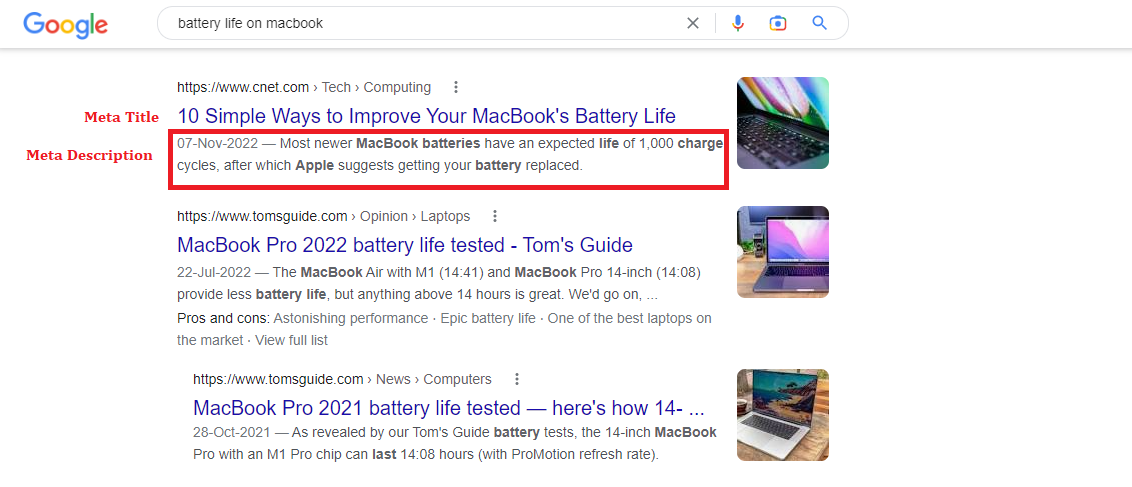SEO (Search Engine Optimization) is one of the most popular digital marketing strategies today. With an unprecedented increase in the usage of the mobile internet, it only makes sense to invest your time and energy in improving the SEO of your website. Today, no business can survive online if it does not learn how to improve its organic visibility in Google search results. With all that said, it’s also important to note that SEO is a very competitive game, where your rivals always keep on increasing and try to knock you out with better SEO techniques. But you don’t have to worry. In this post, I will share 7 effective time-tested SEO techniques that will help increase your organic traffic in 2023 and beyond.
What is SEO?
Before we start learning the techniques, it’s important that we first start with the basics. So, let’s learn — What is SEO?
Search Engine Optimization is a long-term marketing strategy that involves making your website more attractive to search engines like Google, Bing, and Yahoo. This can be done by optimizing your website’s design, content, and structure so that it is easy for search engines to find and index your pages. If they are able to find and index your pages, you won the first challenge. The next challenge is to optimize your webpages with such techniques that Search Engines like Google will begin ranking your website on its first page for your desired keywords.
This ‘Optimization‘ word is very tricky to understand today, especially given the multi-dimensional changes that the SEO industry has undergone during the last decade.
For example, those days are gone when optimization meant placing repeated keywords in your articles to rank on the first page of Google. Also, gone are the days when directory submissions, comments, and guest posts could help your link building efforts for SEO.
With Google dominating the online search industry, it now states that there are over 200 factors that it takes into account to rank the webpages. Also, Google is getting smarter at identifying duplicate content, including unnatural or manual link building efforts. The crux is that, today, Google wants you to focus more on user experience, uniqueness, and relevancy, than any other technique.
While SEO is a complex and ever-changing field, the primary goal remains to help people find your website when searching for information online.
In the following section, we will discuss the tips and strategies that still work in improving your SEO and help drive organic traffic to your website.
SEO Tips to Grow Your Website Traffic in 2023
Now let’s discuss the 7 effective SEO tips that will help you grow your website traffic in 2023 and beyond.
1. Regularly publish high quality content
Publishing top-notch content is among the best techniques to draw website visitors. Your writing should be clear, accurate, and educational.
Consistently posting fresh content will encourage visitors to return to your website out of curiosity to discover more content. From SEO point of view also, if you regularly publish high quality and unique content, it will help you rank better as search engines like to feature websites with high quality and updated content.
2. Learn keyword research
The success of any SEO strategy depends upon how well you do keyword research. Therefore, learn how to research keywords and include the most popular ones in the titles, meta descriptions, and also strategically inside the content on every page of your website.
While placing keywords at relevant locations, it’s important to ensure that you don’t overdo it. The paragraphs must sound natural to read, rather than a robotic version comprising of repeated words and phrases.
Bonus tip: Including semantic (closely related) keywords will not only boost your SEO, but will also make your pages feel more natural and easier to understand.
3. Optimize Your Title Tags and Meta Descriptions
Title tags and meta descriptions are the two very essential components of on-page SEO. When you visit a website, a tab at the top of your browser displays a title tag that informs both users and search engines of the subject matter of each page.
Meta descriptions are brief snippets of text that appear below your title tag in the search engine results pages (SERPs). They inform visitors before they click through what to anticipate from your page.

Because title tags and meta descriptions are such an important part of SEO, it’s essential to take the time to optimize them for both users and search engines. When crafting your title tags, ensure they accurately describe your page’s content and include relevant keywords.
And when writing your meta descriptions, remember to keep them under 155 characters, so they don’t get cut off in the SERPs, and use strong call-to-actions (CTAs) to encourage click-throughs.
4. Make your site ‘Mobile-Friendly’
Ensuring your website is mobile-friendly is crucial because today, more and more people are using mobile devices to access the Internet.

This entails ensuring that your website is easy to browse and use on any mobile device. Use a responsive design to achieve this, or develop a distinct mobile version of your website.
Not sure whether your website is mobile friendly? Take a mobile friendly test now.
5. Improve the user experience and speed of your website
Enhancing the UX and speed of your website will help you retain more visitors / customers. From SEO point of view, it is very important as Google gives importance to those websites where customers’ engagement and retention is higher.
For enhancing the user experience, focus on:
- Improving the site navigation and architecture.
- Good inter-linking of pages
- Having a sitemap in place
- Having a mobile-friendly, or more preferably a responsive website design
- Good choice of fonts and color-schemes
For enhancing the speed of your website, focus on:
- Making your webpages as light as possible (use minimal CSS and JavaScript)
- Using good cache plugins like Litespeed cache or WP Rocket
- Uploading images that are optimally resized (ideally <1MB)
- Have a good web server
If you are using WordPress, I recommend you to read my post on How to fix a slow WordPress site in under 1 hour.
6. Optimize your Images
You must optimize your website’s images for SEO. Include keywords in the file name of each image you upload to your website, and provide a comprehensive explanation to the alternate text section.
This will help search engines index your images properly and ensure that people searching for images related to your business will be able to find them.
To explore more, I encourage you to visit my blog post – How to Optimize Images for Social Media and Better SEO?
Using social media directly does not positively affect your Search Engine rankings. However, the links you share across your Twitter, Facebook, Instagram, and Pinterest pages will count as qualified in-bound no-follow links. This will not only boost your off-page SEO efforts but also helps draw traffic to those pages.
Therefore, ensure that you are engaged and present on all significant social media networks, such as Facebook, Twitter, Instagram, and LinkedIn. Regularly post new, informative and captivating content, and remember to include links to your website.
Conclusion
Any digital marketing strategy must include SEO, and you can use numerous methods to increase website traffic. However, it’s important to remember that not all SEO techniques are created equal, and some may even do more harm than good.
Be sure to research each method thoroughly before implementing it on your site. By using the tips we’ve outlined in this post, you should be able to improve your website’s SEO and start driving more traffic (and sales) in no time.
Should you have any feedback or questions related to this post, please don’t hesitate to drop your comments below.


Hey. Nice write up. I’ve one question for you – Do you think no-follow links carry same value as do-follow links for off-page SEO? 70% of my links are no-follow. Will they carry any weight?
Nice article. Perhaps you have missed one very important point – link building as a part of off-page SEO.